Once a Student, Now an Intern: Examining the History of African-American Spirituals

from the Batesville Printing
Company Records
(MS 00204)
A broadside for the performance of a traveling minstrel show, advertising “an evening of singing, dancing, wrestling & jokes,” caught the attention of a student in the Special Collections Reading Room this past week. He pointed out that the locale of the performance, in the town of Crozet, Virginia, is fairly close to us here in Williamsburg. The history of African-American music comes ever closer to home when one examines the materials in Special Collections that reflect a pattern of continual appropriation and cultural reclamation.
This challenging narrative is the subject of Professor Jamie Armstrong’s African-American Spirituals course (MUSC 370), for which his students gathered as music historians to examine materials relating to the spirituals and songs of African-American music. As a student in this course two years ago, I focused on the nature of the music and on the black musicians who originally produced it. As an intern in Special Collections this semester, I found myself dealing far more with the material record that preserved the spiritual tradition from the nineteenth century to the present day. These materials provoke new questions about what narratives were guiding the spiritual through its rise to popularity, and how the voices of black Americans rose to reclaim a musical tradition that the dominant white culture often tried to capture.
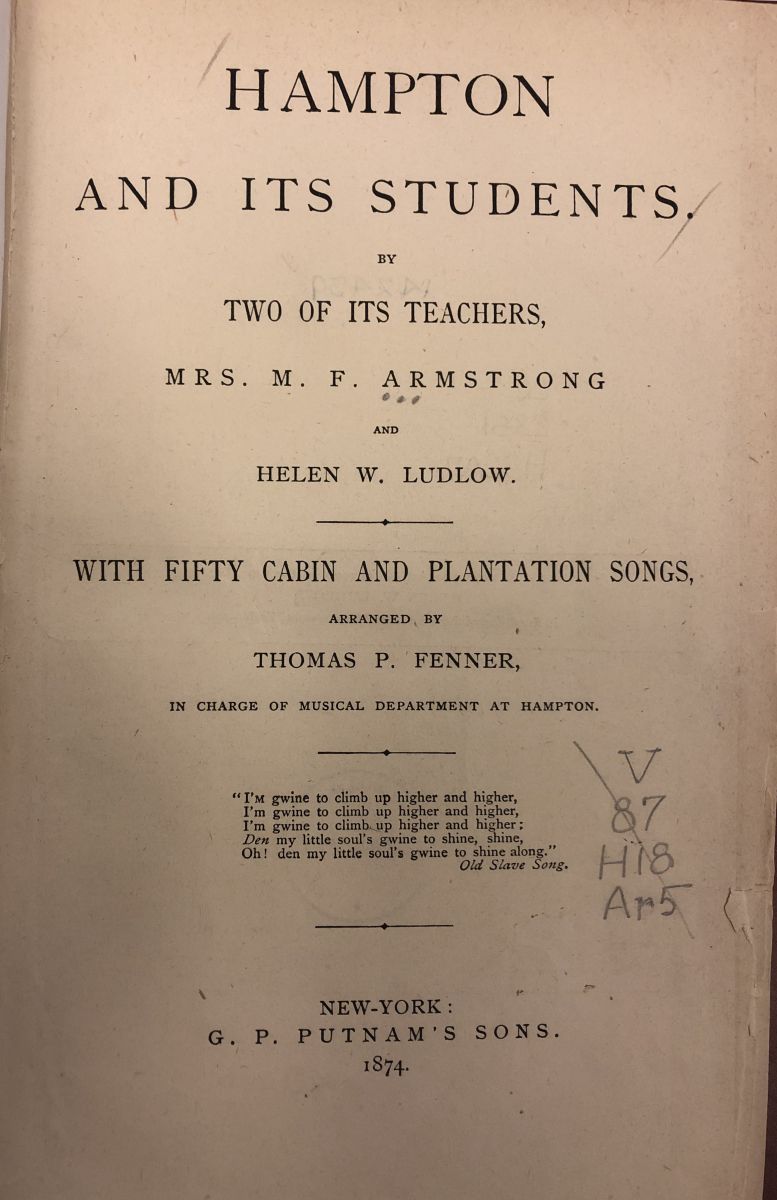
Its Students (Rare Book,
LC2851 .H32 A7)
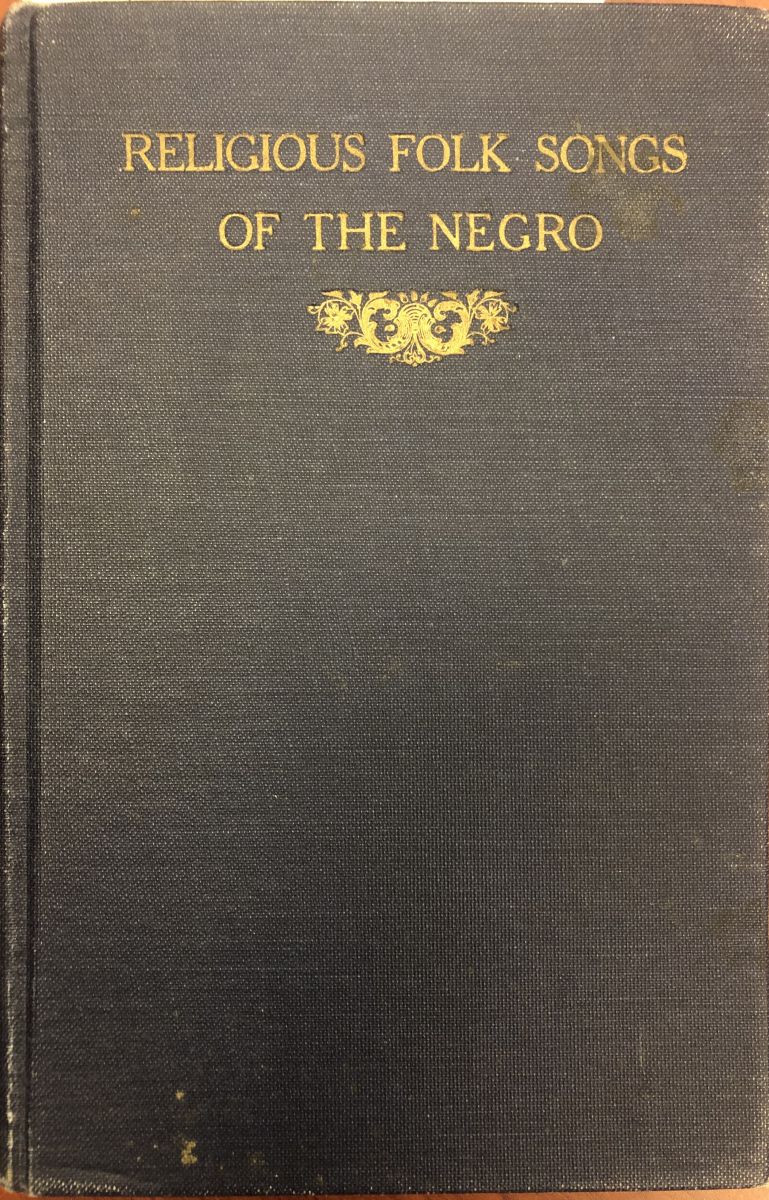
of the Negro (Rare Book,
M1670 .F4 R4 1924)
The earliest written sources for spirituals come from the observations of white spectators who listened to and transcribed the music of African-Americans. This transcription model was the norm for white composers and choral directors who published the original canon of African-American songs available to a popular audience. Rare books in Special Collections provide insight into the struggle for cultural ownership, as we can see from their titles a struggle to name the songs that they were printing while failing to find a white nominal that fit. Hampton and Its Students, a work by two of the teachers there, lists fifty “cabin and plantation songs” in its appendix. Religious Folk Songs of the Negro, arranged in 1909 by a white choral director, identifies the songs as just that.
Although the publication of spirituals by white observers began in 1867, the musical form was first widely popularized starting in 1871 with the performances of the Fisk Jubilee Singers. This musical group consisted of nine student members from Fisk University in Nashville, Tennessee, who sang traditional African-American spirituals as arranged by their white choral director. The effect of the only truly American folk music set in the context of a white choral arrangement set spirituals at the center stage of popular musical culture by the end of the nineteenth century. Flyers from Special Collections reveal an increase in the formation and performances of subsequent African-American-led choral groups such as Shaver’s Jubilee Singers and The Glazier Jubilee Singers, groups that reclaimed the arrangements of white composers to sing traditional African-American songs for national and international audiences.
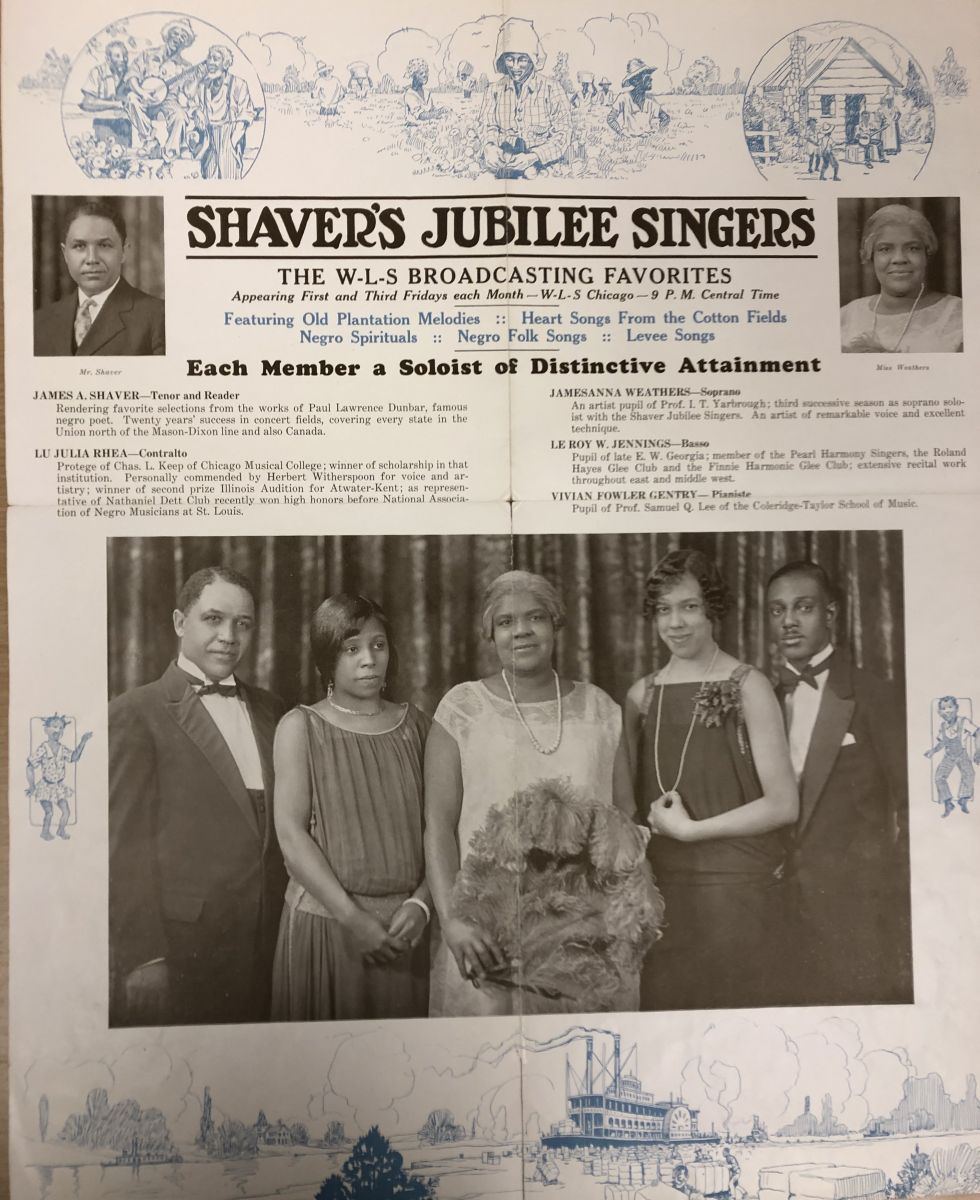
Singers from the Racial and
Ethnic Ephemera Collection
(Mss. 1.05)
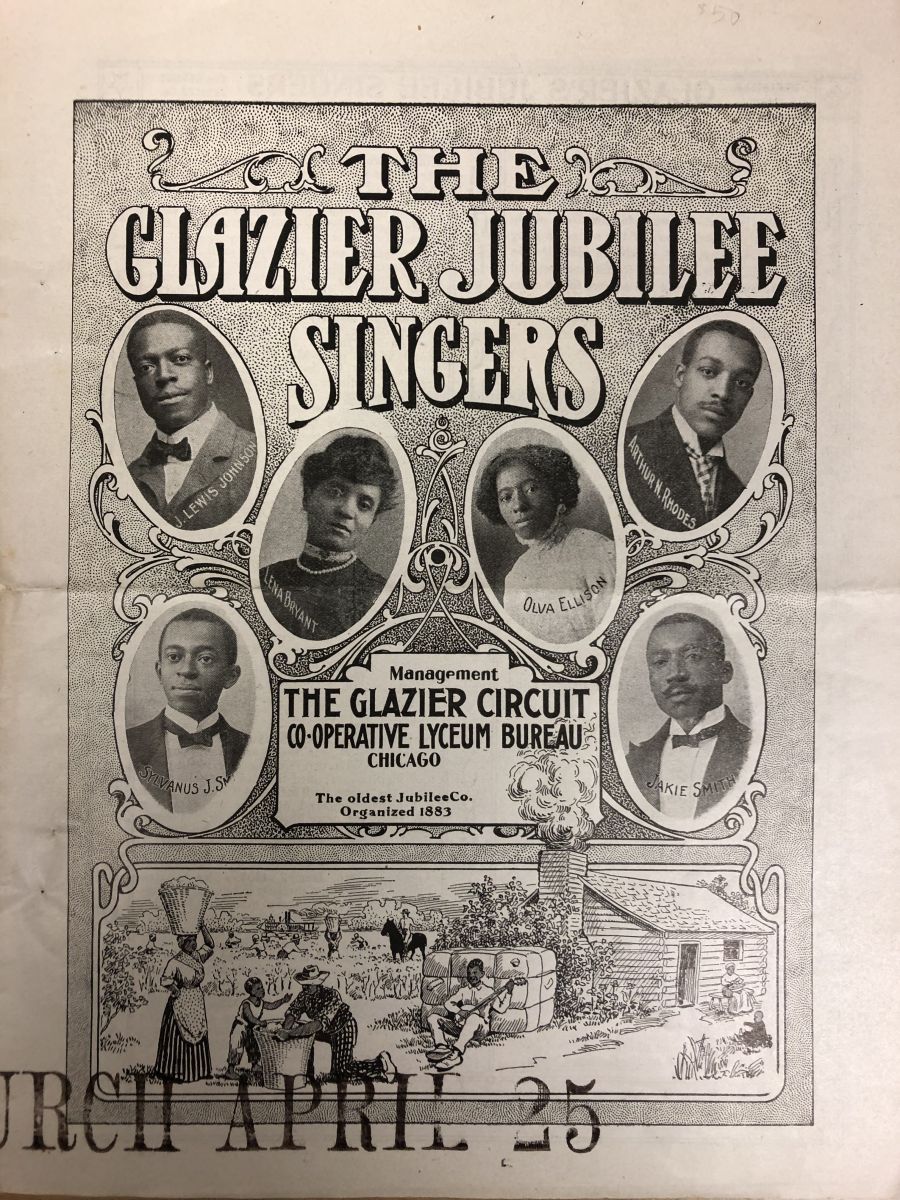
Singers from the Racial and
Ethnic Ephemera Collection
(Mss. 1.05)
Many of the students noted the presence of tunes and arrangements familiar to them from choir experiences here at the College, from their church, and from popular media. How many of us have not heard a rendition of “Swing Low, Sweet Chariot” in a context that falls outside the concert hall? It is thanks to the performances of early African-American university singing groups that the spiritual has become a ubiquitous and honored feature of the choral repertoire.
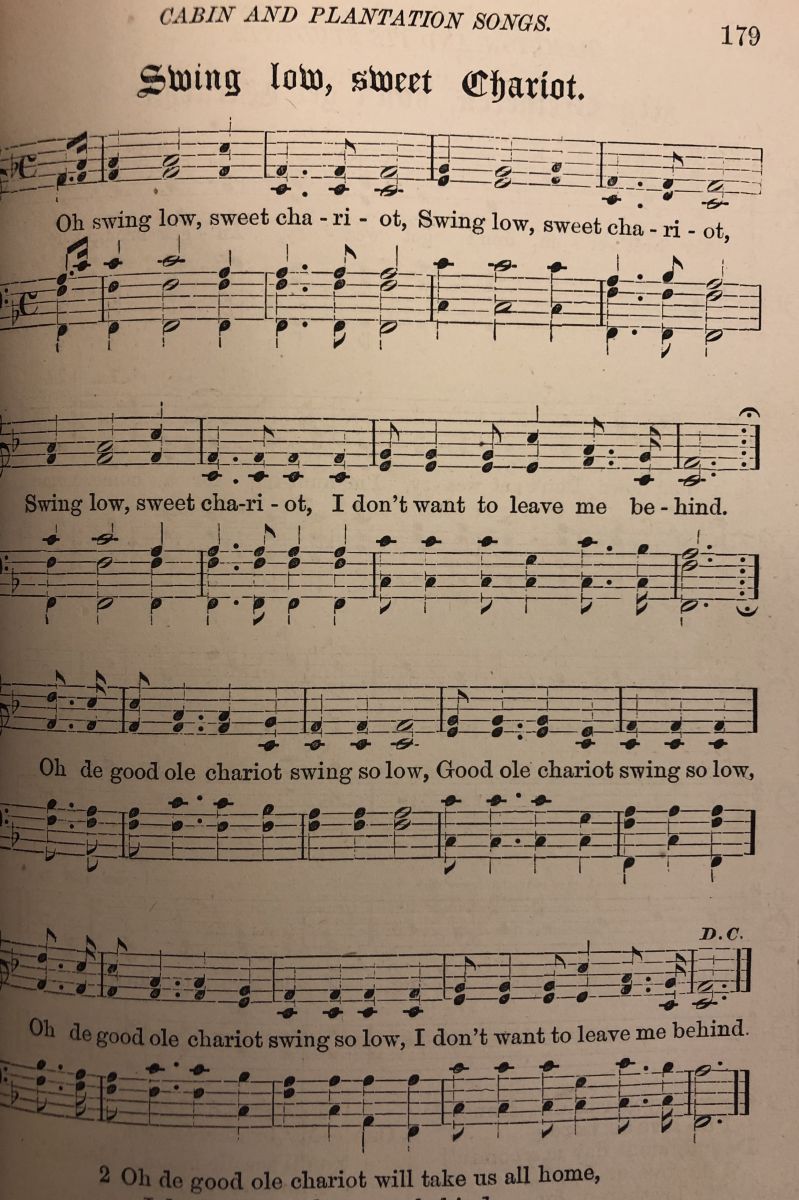
Sweet Chariot,” page from
Hampton and Its Students
(Rare Book, LC2851 .H32 A7)
Recent reckonings regarding the racist behaviors of some of Virginia’s prominent officials have drawn attention to the distressing ways in which minstrelsy and attempts to co-opt African-American culture surround even the contemporary context. In gazing back at the musical legacy of the African-American spiritual, Professor Armstrong’s class is exploring evidence for resilient cultural agency in the face of all attempts to corrupt it. It is a task that becomes richer by our critical reactions to the sources, fuller by our dedicated pursuit of primary perspectives, and most wonderful when we stop and listen to the music.
Written by Rachel Wilbourne, Special Collections Intern

